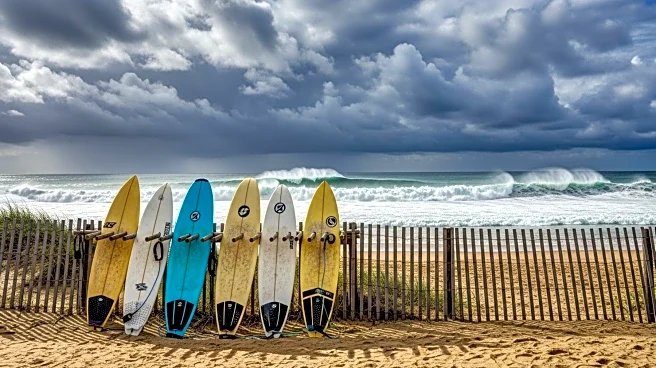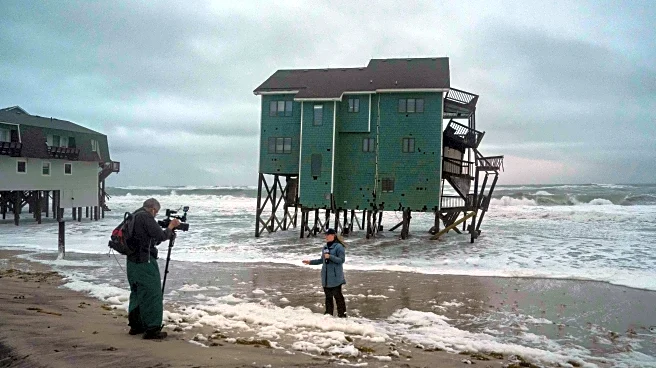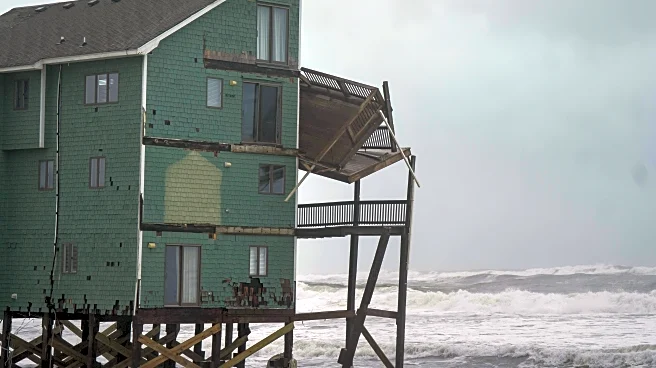What's Happening?
Surfers from across the East Coast flocked to Rockaway Beach in New York City to ride waves generated by a powerful nor’easter. The storm brought waves up to 10 feet high, attracting thrill-seekers despite the challenging conditions. Surfers like Bill McGarry traveled from Virginia Beach to experience the swells, which were described as some of the largest seen in the area. The nor’easter also caused coastal flooding and prompted states of emergency in New York and New Jersey, although the adverse weather did not deter surfers from taking to the water.
Why It's Important?
The event underscores the allure of extreme weather conditions for surfers seeking unique challenges. It highlights the intersection of recreational activities and natural phenomena, drawing attention to the risks involved in such pursuits. The nor’easter's impact on coastal areas also raises concerns about infrastructure resilience and emergency preparedness in the face of severe weather events. This situation serves as a reminder of the need for effective disaster management strategies to protect communities while accommodating recreational interests.
What's Next?
As the nor’easter moves out to sea, coastal winds are expected to persist, potentially affecting local conditions. Authorities may continue to monitor the situation to ensure public safety and manage any residual impacts. The surfing community may reflect on the experience, considering the balance between thrill-seeking and safety. Future weather events could see similar gatherings, prompting discussions on how to safely accommodate such activities while minimizing risks.
Beyond the Headlines
The convergence of surfers during extreme weather events highlights broader cultural and social dynamics, including the pursuit of adventure and the community aspect of surfing. It raises questions about the role of natural events in shaping recreational activities and the cultural significance of surfing as a lifestyle. Long-term, this could influence how coastal cities plan for and manage recreational activities in the context of climate change and increasing weather volatility.













